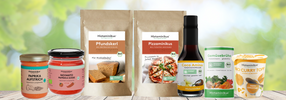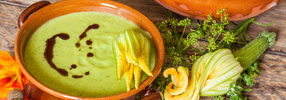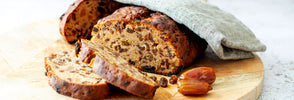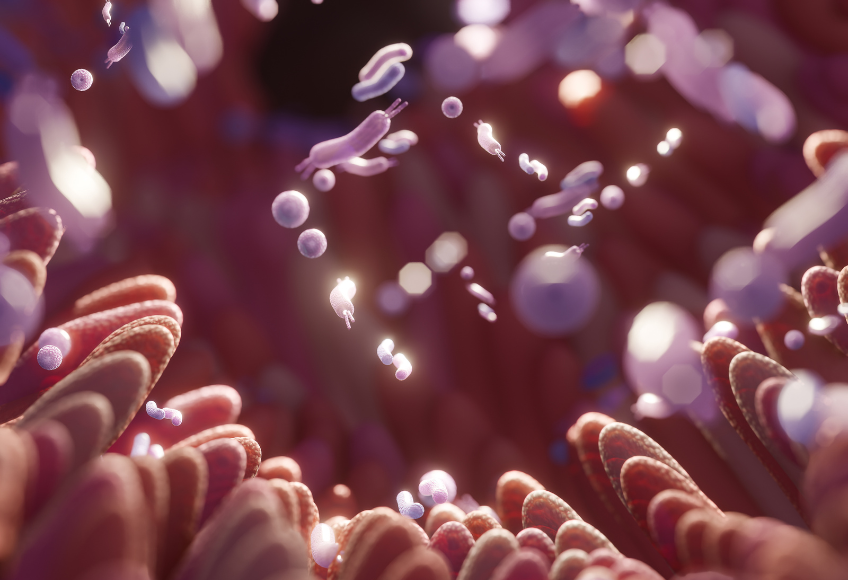
The microbioma of the skin
If you think of the microbiome, you will probably remember the intestine first. But did you know that your skin, bladder and even your lungs are also populated by countless microorganisms? These tiny roommates - bacteria, viruses, mushrooms and more - are not only harmless, but vital for you! Today we take the skin more precisely. What does the skin microbiome do? Why is it so important? And what happens when the balance tilts?
The skin microbioma - your natural protective shield
Your skin is not only your largest organ (approx. 2 m² area!), But also your first line of defense against the outside world. Our skin is populated by millions of microbes - bacteria, viruses and mushrooms that together form a protective barrier. They react to environmental stimuli, support the immune system and even contribute to the skin's acid mantle. We even have a natural sun protection factor against UV radiation through certain bacteria on our skin.
The tasks of billions of microorganisms that work like a protection force:
- They keep unwanted germs in chess
- They support the immune system
- They help to keep your skin barrier healthy
Everyone has an individual skin flora - influenced by age, gender, place of residence and lifestyle. If you are traveling a lot in nature or travel, you will have a greater variety of microbes that strengthen the immune system.
Share information about your brand with your Customers. Describe A Product, Make Announcements, Or Welcome Customers to your Store.
Your invisible team of bacteria
Bacteria feel comfortable in different body regions: propionibacteria live on oily skin areas such as on the face or back on the back. In damp areas - for example under the armpits or in the bar - cory nerbacteria and staphylococcus epidermidis frolic. Sounds a lot first, right? But don't worry, these are the "good" bacteria that keep your skin healthy!
Your skin protects itself - if you leave it
When everything is in balance, your skin works on its own against unwanted germs. Staphylococcus epidermidis, for example, helps to keep staphylococcus aureus in chess - and even produce natural antibiotics! Your immune system reacts to this and forms its own defenses. All of this happens completely unnoticed as long as you don't get your skin out of balance with too aggressive care. The more diverse your skin microbioma, the more robust your skin is. Imagine it like a forest: a colorful mix of trees survives storms much better than a monoculture. Unfortunately, our modern lifestyle - with too much hygiene, pollution and little natural contact - leads us to lose this diversity more and more.
When the skin microbioma gets out of balance
Our skin microbioma is not easy these days. Environmental pollution, fast food, pesticides, stress, little movement and excessive hygiene add the skin flora. Especially during Corona pandemic, not only the virus was combated by frequent disinfecting, but also the natural protective film of the skin was destroyed. The episode? Dry, cracked skin that becomes more susceptible to harmful germs. Do you have dry, itchy skin, redness or eczema? Then your skin microbioma could be out of balance. Studies show that with neurodermatitis, acne, rosacea or psoriasis, a bacterium called Staphylococcus Aureus often gains the upper hand - sometimes up to 90 % of the bacteria on those affected!
But what is the cause and what effect?
Do the bacteria come first and trigger the inflammation? Or does the inflamed skin favor its increase? That remains unclear. However, it is clear that a diverse microbiome is crucial for healthy skin! In the past it was thought that antibiotics were the solution. But they not only destroy the "bad" bacteria, but also the "good". This can further weaken the skin microbioma. So the goal should be to keep the harmful bacteria in chess without suppressing the good ones. Staphylococcus Aureus in particular is becoming increasingly resistant to antibiotics - simply "treating everything away" is not a solution. Therapy that specifically strengthens the useful skin bacteria and supports the natural balance is still in its infancy.
Share information about your brand with your Customers. Describe A Product, Make Announcements, Or Welcome Customers to your Store.
Histamine intolerance and skin problems
Maybe you know it: suddenly your face gets warm and reduces - this is the typical flush, one of the best -known skin symptoms in histamine intolerance. The reason? Histamine ensures that nitrogen monoxide is released, which expands the blood vessels. This leads to redness and heating of the skin.
But that's not all. If histamine is released from the mast cells, it makes the blood vessels more permeable. This can lead to whispering, itching, redness and other skin problems.
Typical skin symptoms in histamine intolerance:
- Flush, reddening of the skin
- Nessel addiction & whisper
- Neurodermatitis
- Eczeme, itching & dry skin
- Sweating
- Spring units, rash & sun allergy
- Edema (swelling)
Why babies need microbes - and what Caesarean section has to do with it
Did you know that babies get their first important microbes from the mother at birth? This is extremely important for your immune system - and also for your skin. Children who are born by Caesarean section later have a higher risk of neurodermatitis, allergies or inflammatory bowel diseases. In the event of a natural birth, the baby automatically absorbs the maternal vaginal and intestinal flora on the way through the birth canal. These microbes help to adjust the immune system correctly. Caesarean section babies miss this important first contact. Because in the first few hours of life, the immune cells are waiting for important signals from microbes to develop correctly. The skin also benefits from these first microbes. Lactic acid bacteria from the birth canal ensure a healthy, slightly acidic skin environment that offers protection against inflammation. That is why Caesarean section babies are often more susceptible to skin problems such as neurodermatitis or diaper rudes.
Caesarean section - and now?
In some maternity hospitals, attempts are now made to provide Caesarean section babies by a lactobacilli extract from the mother's vaginal tract with the missing microbes. The goal: to build the microbiome as well as possible from the start.
The correct handling of microbes is therefore crucial - not only for babies, but for all of us!
Skin care that your microbioma loves
More and more cosmetic brands are relying on skin microbiom-friendly care. This means that no harmful ingredients such as parabens, silicones or aggressive preservatives that could disturb the protective microbes on your skin. But be careful! Natural cosmetics can also contain ingredients that affect the microbiome. It is worth taking a closer look.
Histamine intolerance & McAS: When cosmetics become trigger
If you suffer from histamine intolerance (hit) or mast cell activation syndrome (MCAS), you probably know it: certain stimuli can increase your symptoms - and this often goes far beyond nutrition. Strong fragrances, pollutants or certain ingredients in cosmetics and care products can also activate mast cells, mean stress for the body and trigger symptoms. Some react only slightly irritated, others develop allergy -like symptoms. In severe cases, even multiple chemical sensitivity (MCS) can occur.
Products are better tolerated without:
- Perfume & fragrances
- Dyes
- Preservatives
- Parabens
- Mineral oil
- Essential oils
- Alcohol (with particularly sensitive skin)
The less lovely ingredients, the better for your skin - and your well -being.
More tips for a healthy skin barrier & a strong microbiome:
- Place on gentle, microbiom -friendly care (no aggressive cleaning agents!)
- Avoid too frequent washing - hot water and soap can interfere with your microbiome
- Pay attention to your intestinal health - intestines and skin are connected!
- Probiotic care can also help to support the balance of the skin bacteria
- Movement, especially in the fresh air in nature, also looks very beneficial
Share information about your brand with your Customers. Describe A Product, Make Announcements, Or Welcome Customers to your Store.
Collapsible content
SOURCES
- https://histaminikus.de/blogs/blog/organreihe-haut
- https://histaminikus.de/blogs/blog/geeignetereinigungsmittel
- Journal "Nature and Healing"
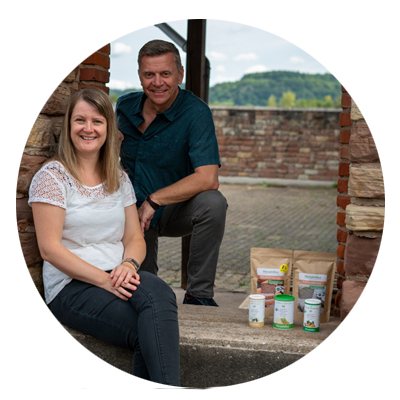
From those affected for those affected
We are Thomas and Michaela Zinser, founder of Histaminikus.
Because of the own histamine intolerance of Michaela and our son, we founded Histaminikus. The frustration does not find any suitable histamine food has spurred us to develop low -histamine food.
We would like to give you back a piece of quality of life. Feel free to look around with us.
Kind regards
Thomas and Michaela

